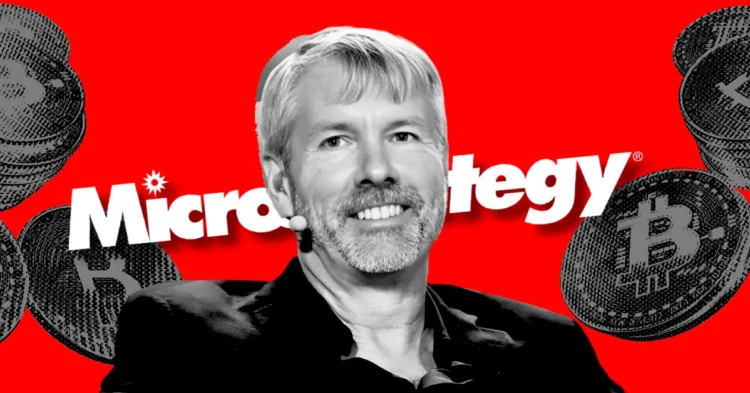Mindaoyang, a renowned figure in the cryptocurrency sphere and the visionary behind dForce, has recently provided fascinating insights into MicroStrategy’s bold financial strategy. He intriguingly compares MicroStrategy’s robust and forward-thinking tactics to the legendary approach of Buffett’s Berkshire Hathaway in the realm of traditional finance. Let’s delve deeper to understand this intriguing comparison and its implications.
The Stock/Bitcoin Relationship
MicroStrategy has carved out a path of significant profit within a span of less than two years by ingeniously transforming its stock into a traditional finance variant of Bitcoin. The heart of this strategy lies in a sophisticated triple arbitrage maneuver involving stocks, bonds, and Bitcoin.
At the core of this strategy, Michael Saylor, the CEO of MicroStrategy, employs a tactic of issuing stock at a premium and using the capital raised to purchase Bitcoin. This maneuver enhances the company’s per-share net asset value and earnings, creating a linear leverage impact that drives Bitcoin’s price upward and subsequently increases the company’s financial metrics.
Convertible Bonds Exquisitely Designed
Transitioning to the stock/bond relationship, Mindaoyang highlights that as MicroStrategy’s market capitalization grows, it gains entry into more indices. This inclusion fosters the development of additional trading derivatives and boosts trading volume, ultimately reducing both equity and bond financing costs. Mindaoyang praises MicroStrategy’s convertible bonds as a masterfully crafted financial instrument, infused with Buffett-like sagacity.
These convertible bonds are particularly notable for being medium- to long-term, zero-coupon, and devoid of principal repayment obligations during their term. The decision to convert to stock or opt for cash repayment rests solely with Saylor, ensuring the elimination of default risk due to maturity repayment challenges.
The Bitcoin Bond Relationship
MicroStrategy’s innovative approach to the Bitcoin/Bond relationship is another area of interest. By borrowing USD bonds to acquire Bitcoin, the company embarks on a strategy that Mindaoyang believes presents no default risk. By leveraging a “depreciating” asset (USD bonds) to purchase an “appreciating” asset (Bitcoin) over the long term, MicroStrategy engages in what he describes as a ‘no-lose game.’ Mindaoyang emphasizes that he has never witnessed anyone harness the triple arbitrage of stocks, bonds, and Bitcoin to such a remarkable degree.
MSTR Reaching $1 Trillion Easier Than ETH?
From a valuation perspective, Mindaoyang suggests that MicroStrategy reaching a $1 trillion valuation could be more feasible than Ethereum achieving the same milestone. A significant factor is the substantial 300% premium MicroStrategy holds on Bitcoin. However, for participants in the secondary market, he cautions that the risks are exceptionally high if they fail to comprehend the underlying variables.
Will The Same Strategy Work On Other Assets?
This raises the question: Can this strategy be replicated with other assets such as Ethereum (ETH), Solana (SOL), or even meme coins? Mindaoyang notes that the feasibility of applying a similar strategy hinges on having enough counterparties willing to agree to comparable convertible bond terms.
For assets like ETH and SOL, he indicates that the strategy is considerably more intricate due to additional economic frameworks, technological factors, and market risks. Nevertheless, the potential returns could be significantly higher, potentially leading to a “degen version” of MicroStrategy. He hints that influential players in the market are already preparing for such opportunities.
What do you think?
Will other companies follow in the footsteps of MicroStrategy? Share your thoughts with us and stay tuned for more insights.










